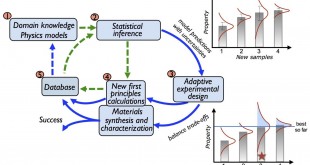As artificial intelligence (AI) continues to advance at an unprecedented pace, experts are increasingly recognizing the critical importance of energy breakthroughs to sustain its growth. Artificial intelligence (AI) is rapidly transforming our world, from facial recognition software to self-driving cars. But this incredible progress comes at a hidden cost: energy consumption. As AI continues to evolve, its hunger for power is poised to skyrocket, posing a significant challenge for the future. The exponential rise of AI applications across various industries comes with a significant demand for power, far beyond what was initially anticipated. To ensure the sustainable development of AI while mitigating environmental impact, the need for more climate-friendly sources of energy, such as nuclear fusion or cheaper solar power and storage, is becoming increasingly apparent.
The Growth of AI and Its Energy Demands
AI technologies, including machine learning, deep learning, and natural language processing, have already revolutionized numerous sectors, from healthcare and finance to transportation and entertainment. However, as AI systems become more sophisticated and widespread, their energy requirements are soaring to unprecedented levels. Training complex neural networks and running AI algorithms require massive computational power, often provided by data centers housing thousands of servers. The energy consumption of these data centers is staggering, contributing significantly to carbon emissions and environmental degradation.
As of now, the energy consumption of AI systems primarily depends on two main factors: the computational power required for training and running AI algorithms, and the infrastructure needed to support AI applications, including data centers and cooling systems.
- Computational Power:
- Training Deep Learning Models: Training state-of-the-art deep learning models, such as large-scale neural networks used in natural language processing and image recognition, can require significant computational resources. For example, training a single advanced model like OpenAI’s GPT-3 can consume hundreds of petaflop/s-days of computational power.
- Running Inference: Once trained, AI models need computational power to run inference tasks, such as making predictions or processing data in real-time. The energy consumption for inference tasks is typically lower than for training but can still be substantial, especially in applications like autonomous vehicles or industrial automation.
- Infrastructure:
- Data Centers: Data centers house the servers and hardware infrastructure needed to train and run AI models. The energy consumption of data centers depends on factors such as server efficiency, cooling systems, and workload demands. Large-scale data centers can consume tens to hundreds of megawatts of power.
- Edge Devices: With the proliferation of edge computing and IoT devices, AI algorithms are increasingly being deployed on devices with limited computational resources. While individual edge devices may have lower energy requirements compared to data centers, the cumulative energy consumption across millions or billions of devices can be significant.
The Growing Concerns
The environmental impact of AI’s energy consumption cannot be overstated. With projections indicating that AI-related energy consumption could increase by orders of magnitude in the coming years, concerns about its sustainability are mounting. The reliance on fossil fuels to power data centers exacerbates climate change, while the depletion of natural resources raises questions about long-term energy security. Moreover, the concentration of data centers in certain regions puts additional strain on local power grids, leading to potential energy shortages and grid instability.
- Avoiding a Climate Catastrophe: Relying on traditional fossil fuels to power AI would exacerbate climate change. We need clean energy solutions like solar, wind, and geothermal to fuel AI’s growth without jeopardizing the environment.
- Long-Term Sustainability: Fossil fuels are a finite resource. A sustainable future for AI demands a renewable energy source that can meet its ever-growing needs.
- Economic Efficiency: The rising cost of powering AI with traditional methods could stifle innovation and limit accessibility. Affordable clean energy is crucial for widespread AI adoption
The Call for Climate-Friendly Solutions
Addressing the energy challenges posed by AI requires innovative and sustainable solutions. One promising avenue is the development of nuclear fusion technology. Unlike traditional nuclear fission, which produces radioactive waste and carries safety concerns, nuclear fusion offers a clean, virtually limitless source of energy. Fusion reactors mimic the process that powers the sun, harnessing the immense heat and pressure to generate electricity without greenhouse gas emissions or long-lived radioactive waste. Although fusion power has long been considered a distant dream, recent advancements suggest that commercial fusion reactors could become a reality within the next decade.
Another viable option is the widespread adoption of solar power coupled with advanced energy storage systems. Solar energy is abundant, renewable, and environmentally friendly, making it an ideal candidate for powering AI infrastructure. Advances in solar panel technology, coupled with improvements in battery storage and grid integration, have significantly reduced the cost of solar energy in recent years. By leveraging solar power and storage, AI operators can reduce their reliance on fossil fuels and transition towards a more sustainable energy model.
Grid Modernization: Upgrading our electrical grids to handle the fluctuating nature of renewable energy sources like solar and wind is essential for a stable AI future.
The Role of Policy and Investment
Realizing the potential of climate-friendly energy sources for AI requires concerted efforts from policymakers, industry leaders, and investors. Governments must enact supportive policies that incentivize the development and deployment of nuclear fusion and solar energy technologies. This includes funding research and development initiatives, providing tax incentives for renewable energy projects, and establishing regulatory frameworks to facilitate the transition to clean energy. Additionally, private sector investment in green technology startups and infrastructure projects is essential for scaling up renewable energy solutions and driving down costs.
In conclusion, the future of artificial intelligence hinges on our ability to address its growing energy demands sustainably. By embracing climate-friendly sources of energy such as nuclear fusion and solar power, we can ensure that AI continues to drive innovation and economic growth without compromising the health of our planet. With collaborative efforts and strategic investments, we can pave the way for a future where AI and clean energy coexist harmoniously, benefiting both humanity and the environment.
 International Defense Security & Technology Your trusted Source for News, Research and Analysis
International Defense Security & Technology Your trusted Source for News, Research and Analysis

